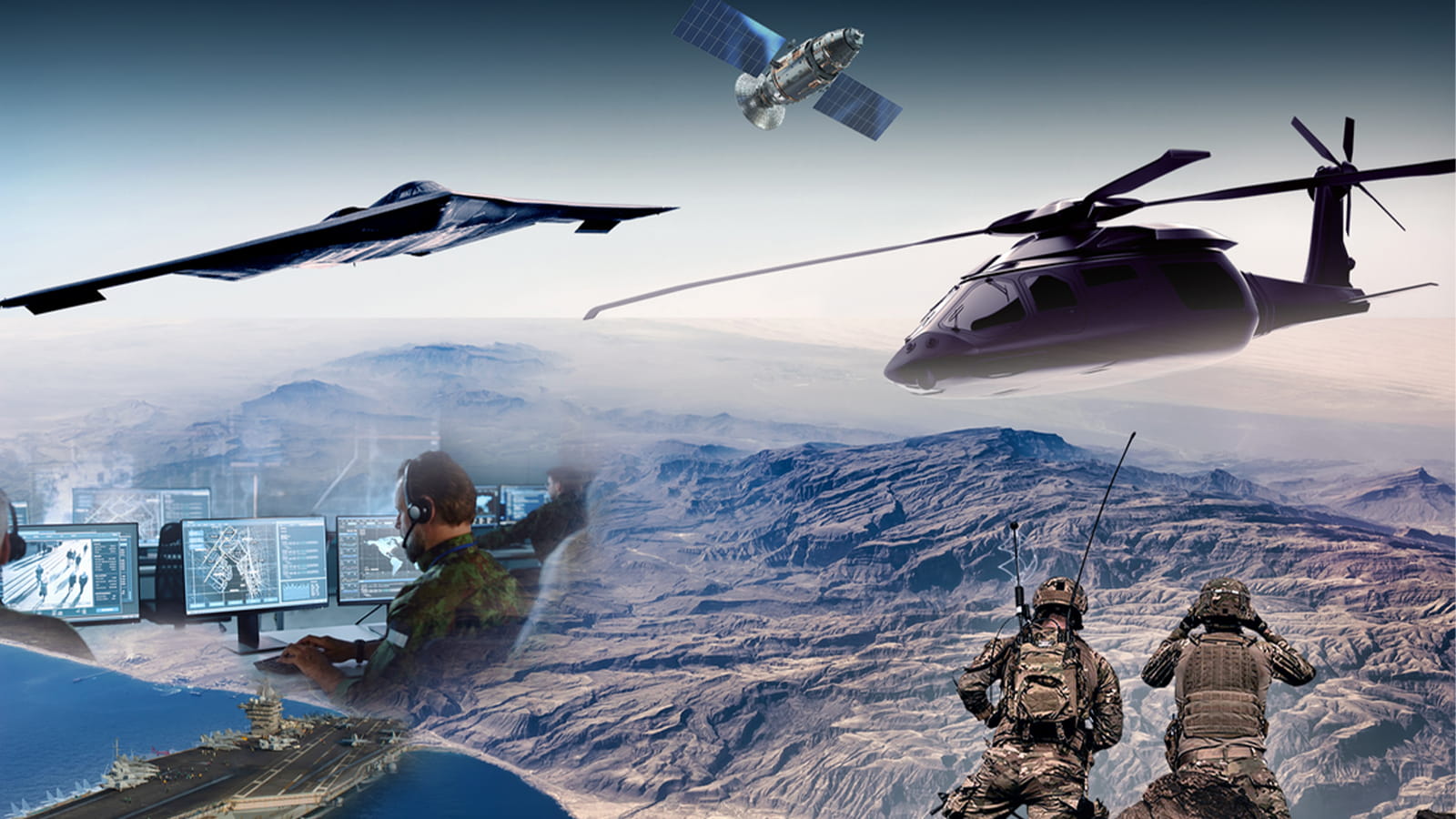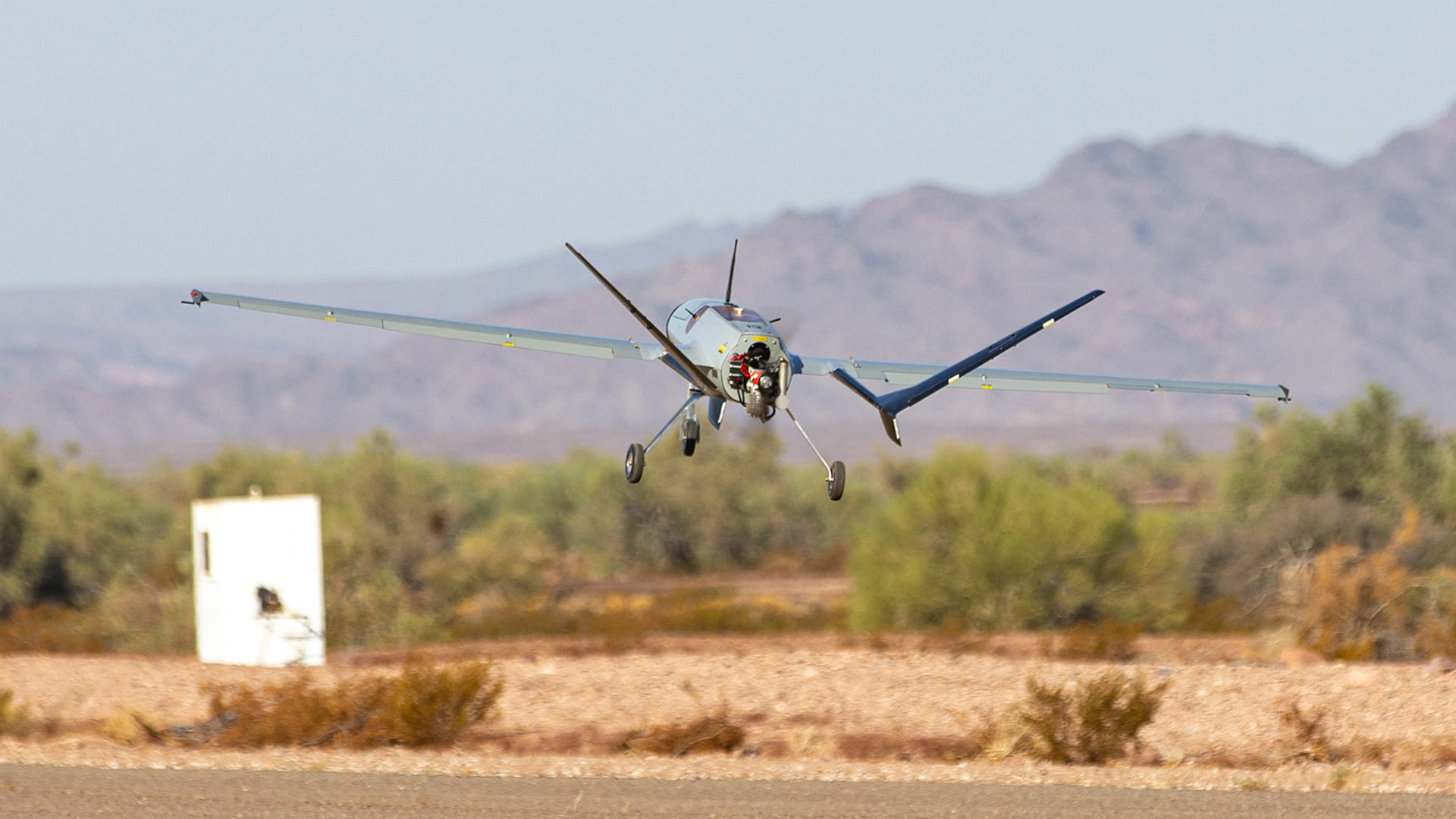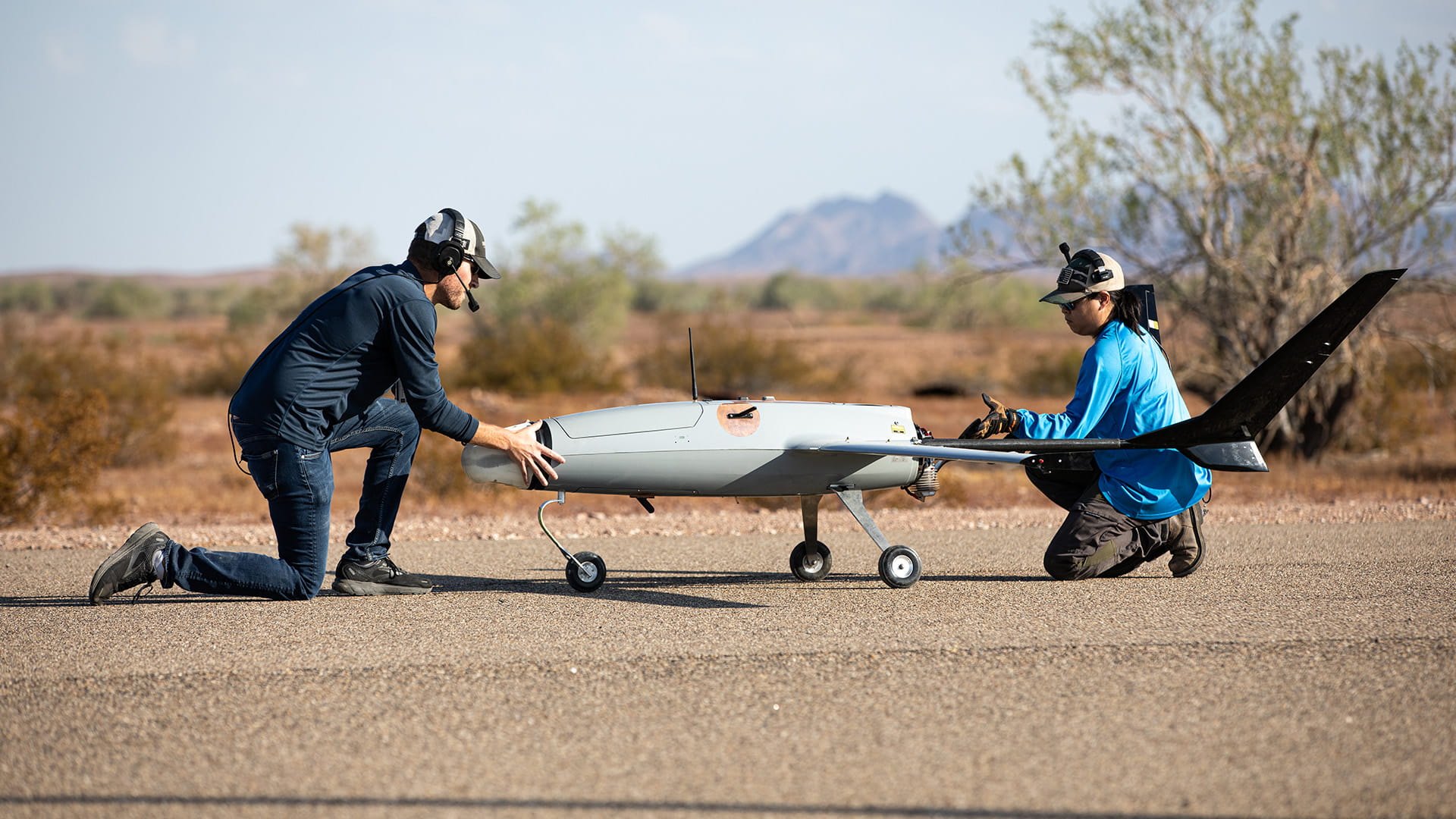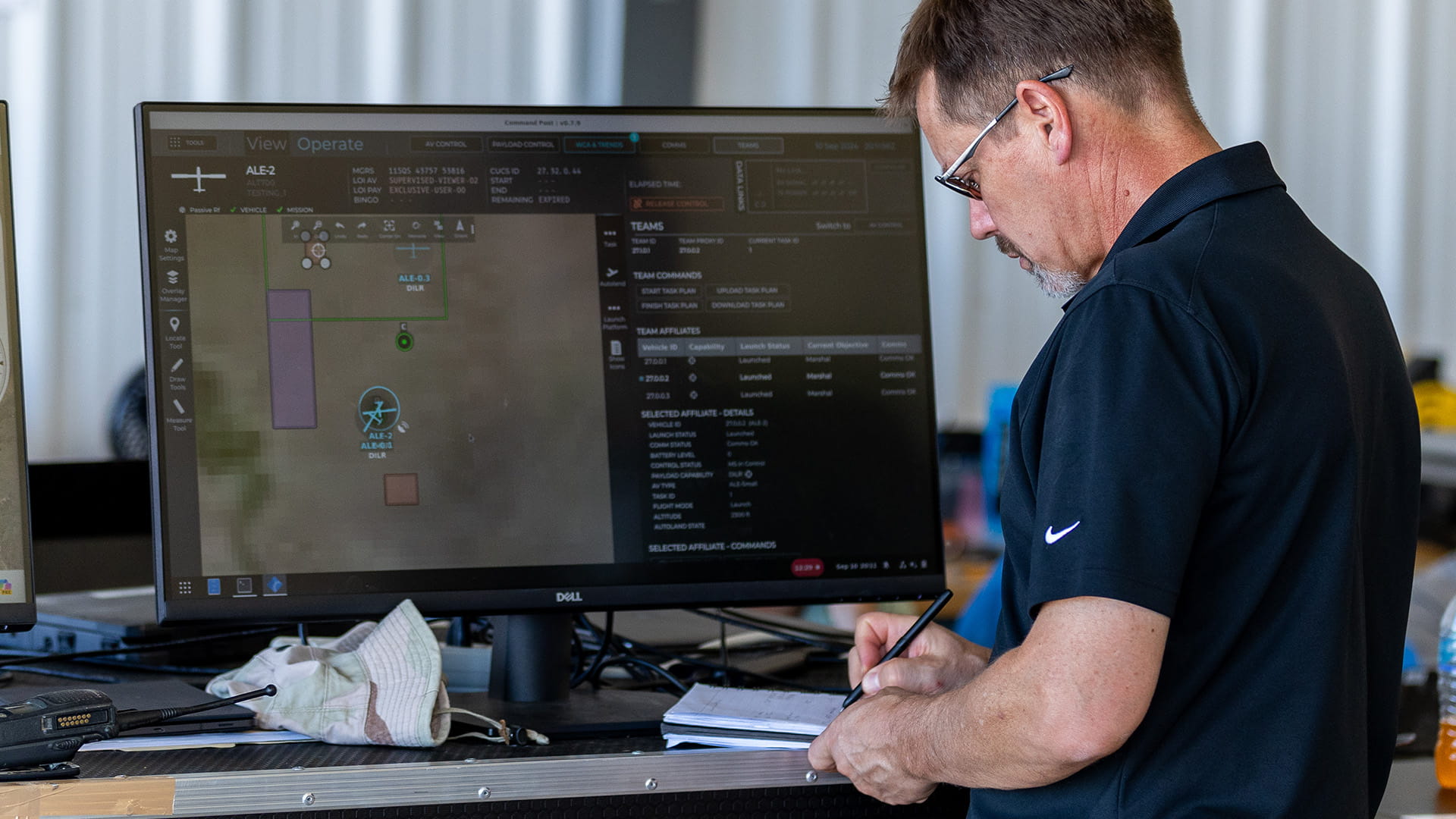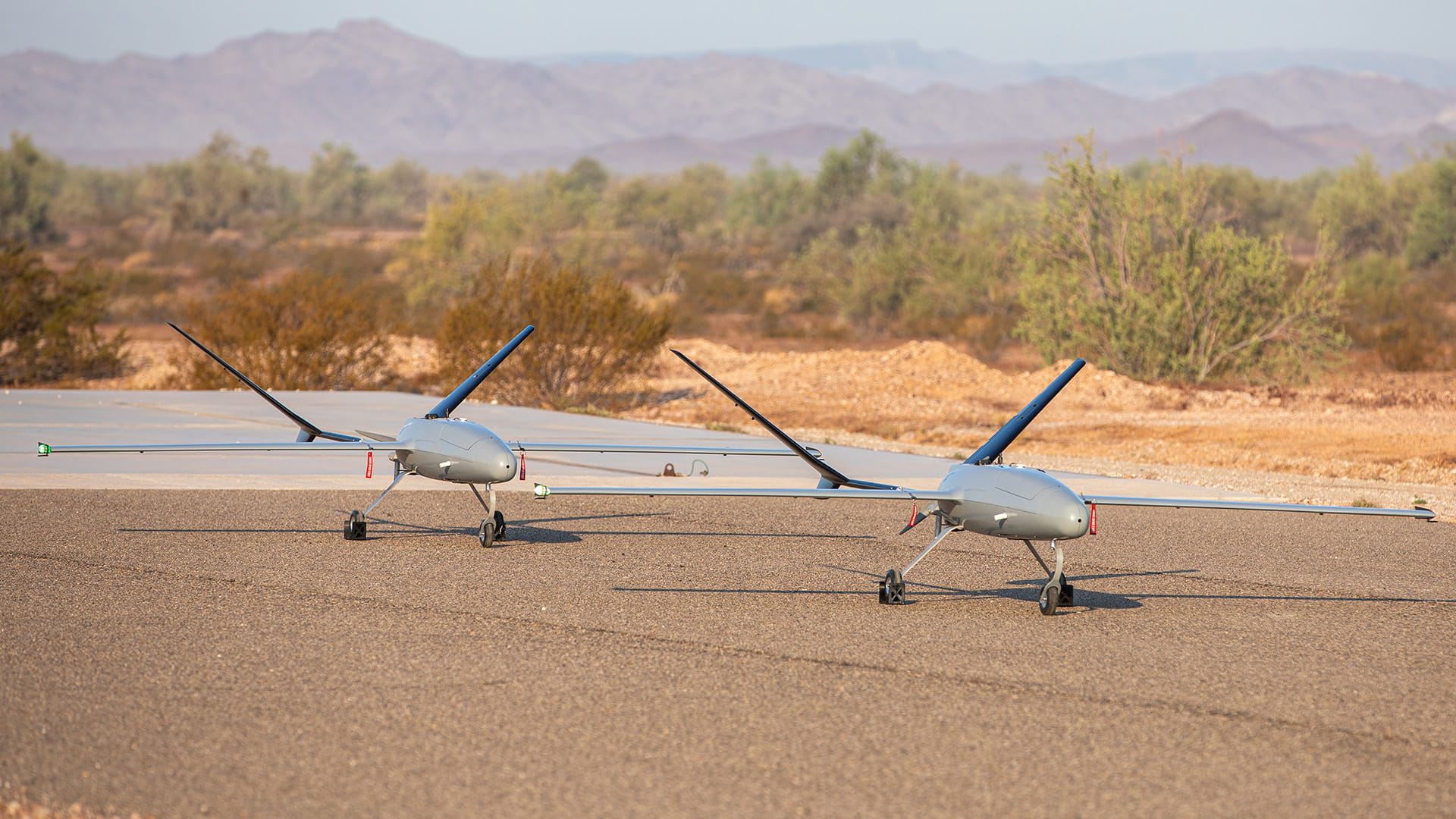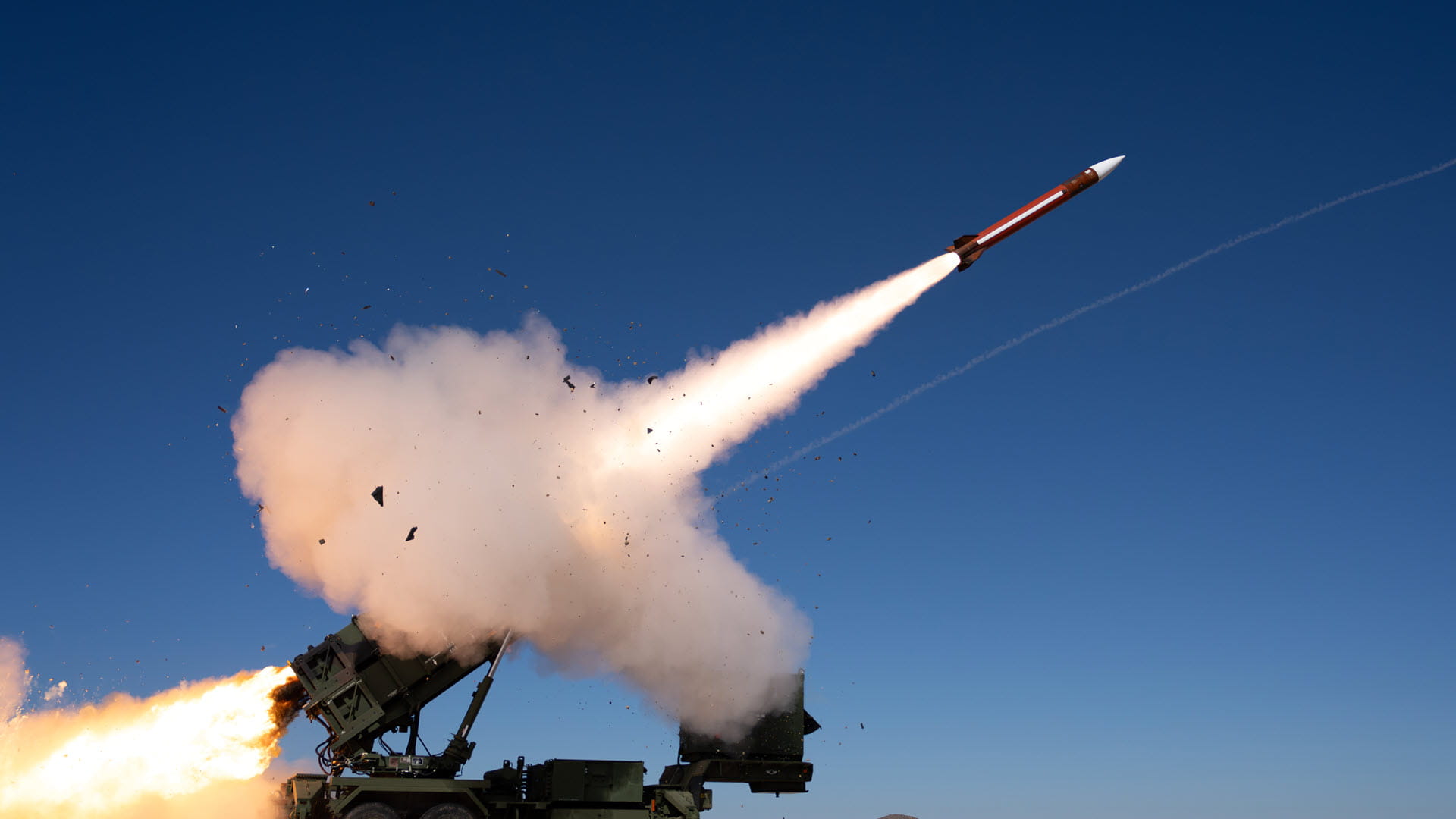In Army demo, RTX coordinates an all-UAV airstrike
Collins Aerospace and Raytheon show UAVs can collaborate autonomously at EDGE24
Under a scorching desert sun, three uncrewed aerial vehicles scanned miles of rugged terrain, with only the broadest of objectives: to search an area for threats.
The UAVs picked up RF energy to detect possible threats, assessed the risk they posed, and recorded their locations. Within seconds, the UAVs sent the data to a command station on the ground, which tasked other UAVs to confirm the targets and simulate a strike.
The military exercise in Yuma, Arizona, was part of the U.S. Army's EDGE24 experiment, where teams from RTX businesses Collins Aerospace and Raytheon did something in flight that they had only done in simulations.
UAVs have been used in reconnaissance and strike missions for years, but the demo showed they could complete them with human guidance for only critical mission decisions. The demonstration used two RTX autonomy solutions: Collins Aerospace’s RapidEdge mission system and Raytheon’s CODE autonomy.
Rather than carrying out step-by-step instructions or a pre-planned route, the UAVs were provided a general mission. They were then able to communicate with each other and figure out how to achieve the goal while reacting to obstacles in real time.
The technology worked when networks were unavailable, too. To simulate a communications-denied environment in battle, Collins turned off the ground-to-air command link, and the UAVs completed their mission without help from the control station. They also communicated seamlessly with the team manning Raytheon’s surrogate for the Coyote Block 3 launched effect.
“That's really where we shined,” said Bernd Knox, a business development lead at Collins, pointing out that the UAVs distributed data to both the Raytheon team and the Army’s Future Vertical Lift Cross-Functional Team control center. “Information is useless unless you can share it with the appropriate users.”
EDGE24, the Army’s Experimentation Demonstration Gateway Event at Yuma Proving Grounds, tested how emerging launched effect technologies integrate with other systems on a mock battlefield, supporting the Army’s Future Vertical Lift initiative to modernize rotorcraft. Peter Laird, Collins’ program manager for autonomy and launched effects, said the event gave the team a necessary opportunity to validate their systems in a real-world environment.
“Getting an air vehicle to fly is now the easy part – and it’s not easy,” Laird said. “Autonomous behavior adds a whole layer of complexity that is very difficult to validate until you’re up in the air.”
The demonstration also showcased the speed of Collins’ RapidEdge team, whose focus is to find solutions like the one used at EDGE24. They developed that system in five months through techniques including advanced prototyping, integration, modeling and simulation – which can run entire missions in seconds – and “hardware-in-the-loop” testing, which takes data from those simulations and pairs it with actual processors, RF links and vehicles before a full flight test.
Their work, in turn, is an example of a broader initiative across RTX to use such approaches in developing transformative technologies.
Flexible solutions delivered fast
“What we’ve shown and provided is a platform and an ecosystem where they can continue to add in new behaviors, validate them, learn and then come back and repeat that process very quickly on the order of months, not years,” Laird said.
Their intent is to not just provide one capability like collaborative autonomy but to help the Army build flexible platforms that provide multiple solutions to make them successful in any mission. The systems they demonstrated at EDGE24 are in the early stages, but the team plans to use what they learned at the experiment to continue testing and developing to bring the capability closer to the battlefield.
“No one knows exactly what the right solution is yet to solve problems that we likely haven’t even encountered,” Laird said, “so we’ve placed our bet on the way that we’re optimizing for rapid testing and deployment of autonomy and behavior development.”
